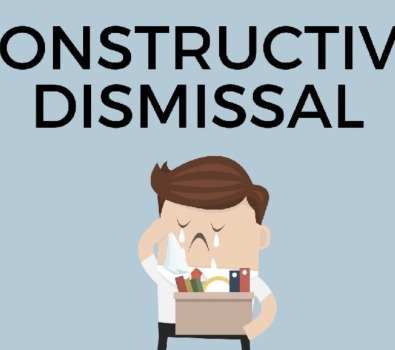Every company needs a solid and effective marketing strategy, regardless of how they communicate with their target audience and sell their products. Does marketing work, whether you adopt a B2B or B2C sales model? How do they differ? What can you do if you fall under one of these sales categories and want to provide your customers with a high experience level?
This post will briefly highlight the main differences between business-to-business (B2B) and business-to-consumer (B2C) sales. After that, we will explore a few practical tips on how to stay on top of marketing trends and eventually improve your marketing techniques in a competitive business environment.
Difference Between B2B and B2C
The significant difference between B2B and B2C lies in how they conduct their operations. From the name “business-to-business,” B2B eCommerce sells to other firms or organizations. On the other hand, B2C, or business-to-consumer, focuses on selling to individual consumers instead of other companies. While B2C companies elicit an emotional response from their customers, B2B companies emphasize on the value of their products and services.
In a nutshell, B2C marketers appeal to clients more emotionally than their B2B counterparts. B2B eCommerce is also more complex than B2C eCommerce, considering buyers undergo multiple consultations before purchasing.
Basics on B2B
Experts say that B2B has evolved a lot. Originally, B2B companies would only put up their website and wait for potential clients to connect with them. Today’s B2B companies are shifting to 24/7 seamless customer engagement by integrating various shopping methods. This time, B2B companies won’t just sit back and wait for the clients to approach them. Instead, they meet them halfway to offer them elevated eCommerce experiences instantly.
One perfect example of a B2B company is selling office furniture, software, or paper to other businesses. Apple is also a famous example in the technology arena holding B2B relationships with other companies, such as Intel, Samsung, Panasonic, and semiconductor producer Micron Technology.
Basics on B2C
B2C approaches or sells to its end-users without a middle person. Traditionally, B2C referred to infomercials, eating out at restaurants, mall shopping, pay-per-view movies, and others. The birth of digital marketing changed how B2C businesses used traditional mediums to reach out to customers. B2C companies now sell products and services directly to their customers over the Internet.
Online B2C business models come in 5 categories: direct sellers, advertising-based B2C, online intermediaries, community-based, and fee-based. Some examples of B2C companies are Amazon, Walmart, Shopify, and other firms that target individual consumers for their products and services. Other examples are dog sitters in Etobicoke, which offer direct customers a range of services, like daycare and boarding services for pets.
How to Achieve Effective Marketing Strategies for B2B and B2C
If you feel like you’ve done everything you can to engage your target customers, and yet they still don’t find your offers appealing, you might wonder, “Does marketing work?” A simple answer: yes, marketing works, as long as your mind, heart, and effort are up for daunting (but fulfilling) tasks.
While they have some differences, B2C and B2B share the similar goal of satisfying each buyer. Their primary objective centers around their clients and how to transform prospects into customers.
Here’s how you can make your marketing moves effective, whether you are in a B2B or B2C business:
1: Understand your buyer
On top of answering “yes” to the question, “Does marketing work?” all companies must first identify their objective and narrow down their strategy list. In line with this, they must understand target consumers, especially when it comes to buyer pain points, purchasing habits, and how they research to find relevant information on the Internet.
To better understand your target audience, imagine your company as a new player in a field. To provide competitive offers on your products and services, you must approach them (your clients) with an emotional appeal. This is vital to convincing your prospects to take a chance with you. If they have a current supplier, employ efficient techniques to persuade them to make a switch. Target your prospects by guaranteeing them emotional and quality rewards.
2: Embrace the latest digital marketing platforms
The key to business success is keeping up with marketing trends, not just in techniques but also in various digital platforms. Unsurprisingly, there are bundles of digital tools every B2B or B2C marketer should know. Discover the advantages of Google Search Console, WordPress, HubSpot, Salesforce, social media channels, and app deep linking platforms. Additionally, you need to adopt a search engine optimization (SEO) discipline to navigate how these channels can help you better serve your clients.
After all, the goal is to land in top searches and continuously attract customers. Aside from this, remember that consumer habits can shift overnight. Patterns like these will affect both B2B and B2C companies, so you must keep up with the latest online platforms to know what your users want.
3: Improve your network

Both B2B and B2C benefit from an excellent customer experience. You can achieve this by expanding your networks. It will then convey the message that you understand your customers’ needs. As a marketer, learn how to incorporate person-to-person (P2P) relationships to build a connection with your clients. Furthermore, you can adopt this technique by having strong leadership skills in generating ideas and emotionally relating to your clients. It’ll be easy for you to weigh and assess the results of these connections.
4: Strengthen brand awareness
Make sure your brand awareness is strong by evaluating its effectiveness and market penetration. This will matter for both B2B and B2C companies. In addition to observing your competitors, you might be able to incorporate the brand awareness strategy that is working for them into your promotional campaign.
People looking for suppliers must know that you are credible and reputable enough before they can trust you.
5: Communicate the product benefits, values, and mission to your consumers
Lastly, communicate the value and benefits of your products and services. It is more impactful if you can explain how these products and services align with your company’s mission, vision, and core values. Most importantly, your end-users must be aware of the advantages they can enjoy once they purchase from you. For B2B marketing, highlight how their business will be more stable when they buy from you.
Meanwhile, for B2C marketing, highlight the personal benefits they can get from your products, even if it means that they won’t be purchasing again. It can also be helpful to give reasons as to how their buying decision can benefit you, like an opportunity for your career growth.
It doesn’t matter whether you are doing B2B or B2C sales to market your products and services. Find out what your customers want, how your goods can uphold their values and improve their lives, and how you can increase your sales profits. It is even more beneficial to assemble a team of highly competent marketers and advertisers to efficiently adapt the techniques discussed above.
To reiterate, be a strong, firm, and logical leader who leans on innovative marketing techniques and practices transparency. This way, your team will be more engaged in the idea of helping you improve your business. As a result, you can easily convince customers why they should choose you over your competitors.



